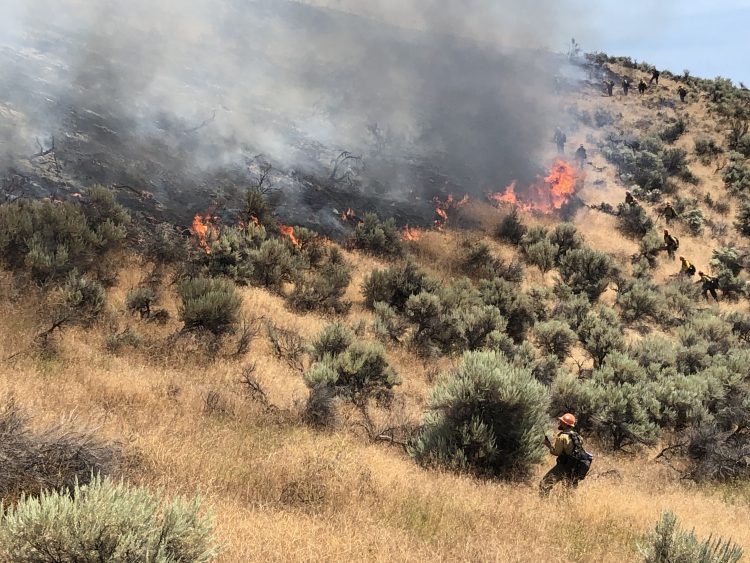How a hotshot firefighter manages a demanding career and the rigors of graduate school
There are just over 100 hotshot firefighter crews in the United States. They’re part of U.S. Forest Service’s elite firefighting team, a group of specially trained professionals that fight fire in some of the most extreme conditions. During fire season, they work an intense schedule, staying on-call for 16-hour days, for 14 days straight, for about six months a year.
In the off-season, hotshots work to keep up their endurance and stay fit. Some also choose to take on other challenges outside of firefighting. Will McKinney, for instances, is earning a master’s degree in Infrastructure Planning & Management from the University of Washington.
Becoming a Student
Will, who just finished his eleventh Hotshot season, says the MIPM program was a no brainer.
“I came to the realization that if I stay in firefighting, hotshot is [where I want to be],” Will shared. But it’s a really hard lifestyle and the physical labor made me realize I need something else – year round work. How can I use my fire experience so I can grow in another direction?”

One of the biggest challenges for anyone balancing a career and school is finding time to study. It takes creativity and the right team to create a personalized plan. Part of the strength of the Department of Urban Design and Planning’s two-year, part-time, online graduate degree is the flexibility of the program. MIPM can often be tailored to the individual student, regardless of situation.
Will reached out to the department’s academic director, Wendy Freitag, before enrolling. He shared his job, schedule, and goals, and together, they came up with a way to customize the program so Will could earn his master’s.
Making it work
Fire season can be unpredictable. If it starts early or runs late, Will has to put his studies on hold, take an incomplete grade or work double-time to catch up. What’s more, there are no breaks in fires. Will says major fires are now back-to-back-to-back.
“‘Fire season’ is now a ‘fire year’ because there are so many big, destructive fires outside the season.”
Resources, including the number of firefighters available, are limited. That puts stress on crews and puts more land in danger. “We have fewer ‘slow’ years and we don’t have the resources to fight the more difficult fires.”
During fire season, Will keeps in touch with his professors and program administrators so they’re aware of his situation and whether he’ll be able to start classes on time. Will says the availability of UW’s faculty and staff, the ability to accommodate a non-traditional work schedule and the quality of education make UW’s program stand out among other online programs.
Joining the team
Will took the advice of a friend and got certified as a firefighter. He was drawn to a job that required physical fitness and teamwork. In 2006 he started firefighting on what’s called a Type 2 team. These teams focus on fire suppression and fuels management. It’s been go, go, go for Will ever since. “I applied; the next week I was working, and two days later, I was at a fire.” Soon after, he applied to be a hotshot.
The federal government established hotshot crews in the 1940s to fight fires in Southern California’s Cleveland and Angeles National Forests. The hotshot teams work in the hottest part of the wildfires. They are trained to handle the strategic and tactical aspects of firefighting.
Looking to the future
Will says he’s seen a lot of change in the time he’s been on the job. “The way we engage fire has completely changed. The old way was to put every fire out. Now, fire is so intense that we just can’t do that,” he explained. He says teams are looking at how they manage fire. They even use it as a tool through prescribed burns. This subsequently decreases the amount of underbrush and other material that feeds wildfires near communities.
“It’s not sustainable to put all the fires out. Some areas need fire so there’s less fuel, and when they do burn, it’s not so intense that we can’t put it out.”
Will hopes to combine this practical, hands-on experience with his master’s degree to build a future career. He says, “The cool thing about MIPM is that it exposes you to so many different realms. I haven’t decided which direction to go, but I want to use my knowledge of fire in some capacity along with what I’ve gotten from MIPM in planning.”
ADDITIONAL LINKS:
> To learn more about the Masters in Infrastructure Planning and Management Program (MIPM) program, visit the MIPM website.